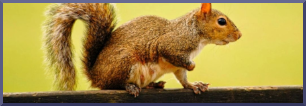INTRODUCTION
If you are browsing the Dæmon Page, that means you are interested in dæmons and looking for some explanation. What are those dæmons? Are they real? Can I have one, too? You might be looking for a clear definition of what a dæmon is, but the truth is - there is no easy answer to that. Instead of a short definition, we will give you a slightly longer introduction to what dæmonism and dæmons are, and where does it all come from.

The writer Phillip Pullman, the author of His Dark Materials trilogy, has created a world in which all humans have dæmons. They are the person's soul in an animal form, a shape-shifting companion who eventually settles into one form which symbolically represents their human's nature. They can be anything from a butterfly to a wolf, to a dolphin. They give advice, they chastise bad decisions and offer unwavering comfort and support. If this bond was to somehow be severed, the human would become a shell of their former self, and none can exist without the other. These dæmon companions are, without a doubt, an element which sticks with the books' readers and which have helped the trilogy to become a best-seller.
Clearly, we don't live in a world where corporeal familiars follow their humans around. So, what are dæmons to us? What does it have to do with the real world? Those of us who call ourselves "dæmians" have taken Pullman's wonderful dæmon concept and turned it into something fun and useful at the same time. For us, dæmons are a part of our consciousness that we've assigned a name, gender, and usually, a symbolic animal form. They're glorified imaginary friends that act as the other side of our mental dialogue - sometimes being the voice of reason, devil's advocate, or just a friend. Simply put, dæmons play the role of mental companions, mental constructs often created from our internal dialogue. For some, engaging in a conversation with oneself comes naturally. For others it's more difficult and some will not even be interested in that. However, in such cases dæmonism still has something to offer!

Why get into dæmonism if you don't talk to your dæmon? Well, dæmonism is more than just a way of organising your thoughts in a dialogue. The other side of the coin is the form finding aspect. In the books, once humans reach adulthood, dæmons choose their settled forms instinctively - we, however, have to resort to a more complicated form finding process. Once our personality becomes more or less fixed, or as we like to call it - settled, we can search for an animal form that fits us best. It's controversial what this settledom entails exactly, or if it is even psychologically possible, but from late adolescence or early adulthood our personalities becomes unlikely to change in any dramatic way. That is usually considered as "settledom".
Currently, there are two common form finding methods, analytic and Pullman (symbolic), but the goal in both of them is to find a form that describes us best. The first system systematically analises animals' behaviours and interprets them into personality characteristics - for example, analytically, a nocturnal animal would fit a person who avoids attention. The other method focuses on cultural associations with a species, which means that a person with an owl form will be in some way connected to knowledge and wisdom. To be clear, a well-fitting form will describe not just one aspect, but most or, ideally, all of your personality or identity. Form finding is essentially a personality typing system along the same lines as Enneagram or MBTI, except the possible outcomes are almost as numerous as the number of animals on Earth. You can read more about both form finding methods in the
form finding section of our page.

That, my friends, is dæmons in a nutshell: mental constructs which take a symbolic animal form. At the same time, remember that pretty much every dæmian will give you a different definition if you ask them. Everyone's experiences are unique and individual.
If you have further questions, please visit the
FAQ and consider registering on
our forum!


